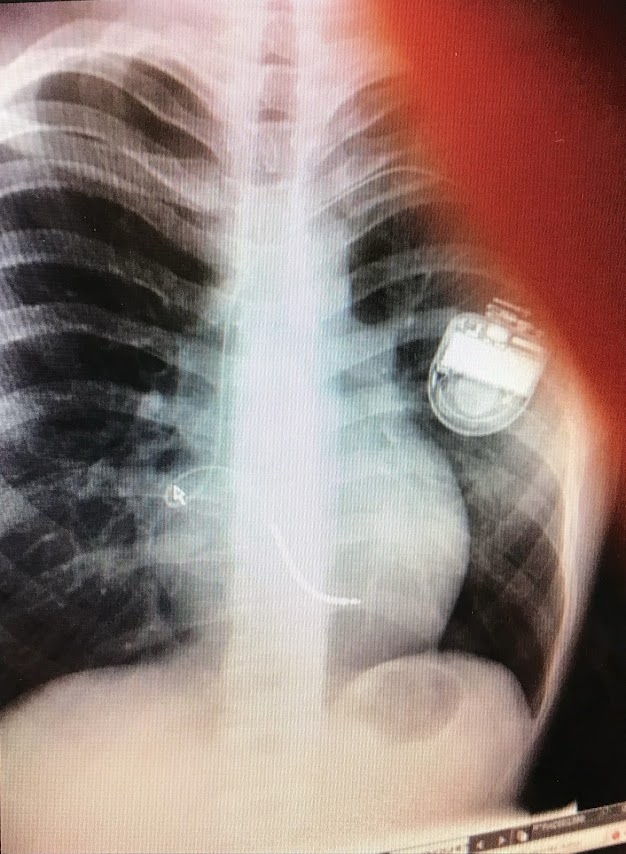A few weeks ago we had a lecture and a workshop all about prosthesis. Before the lecture I thought it would mostly be about prosthetic limbs and joint replacements. I didn’t consider the wide variety of things that could be considered prosthesis and I also didn’t think about orthosis.
I was particularly interested when he mentioned there is some debate as to whether pacemakers should be classed as prostheses or orthoses.

This in particular interested me as my brother has a heart condition called Long QT syndrome where, as you may guess, he has a prolonged QT interval of his heartbeat. Due to this, when he was a child, he collapsed three times and each of these times, his heart stopped. Therefore, at the age of ten, he had an Implantable Cardioverter Defibrillator (ICD) implanted subcutaneously.
A few fun facts about ICDs and people who have them:
Every 8-10 years he has to have it replaced as the battery wears out, and he gets an updated model – like a phone upgrade!
Also – magnets interfere with its function; therefore, he is unable to go through metal detectors at the airport, and when we hug him, we can’t have our phones in our hands!
Now back to the debate:
The definition of a prosthesis is an artificial device that replaces a missing or impaired body part. This can be internally e.g. a hip replacement, or externally e.g. a prosthetic leg.
An orthosis is defined as a device used to modify the structural and functional characteristic of the neuromuscular and skeletal systems through systems such as immobilisation or support. Orthoses are also usually external e.g. a foot orthotic corrects flat feet and other foot injuries.

Next, what is the difference between a pacemaker and an ICD?
ICDs are similar to pacemakers. According to the NHS website, pacemakers send electrical impulses to your heart to keep it beating regularly and not too slowly. However, ICDs monitor the heart and send a larger electrical shock to the heart to restart it when it stops or to make the heart rate stop beating abnormally or dangerously.
So where does it fit in the prosthesis vs orthosis debate?
Tested against the definition of a prosthesis:
ICDs do not replace a missing body part, but it does replace the impaired function of the sinoatrial node, the body’s natural pacemaker.
And against the definition of an orthosis:
First of all, it is internal not external which is already rare for an orthosis. It doesn’t modify the structure of the heart, but it does modify the function in the event of abnormally high heart rate or when the heart stops.
The heart is not part of the skeletal system, but is it part of the neuromuscular system? The neuromuscular system is defined as the system affecting nerves and muscles. The heart is a muscle and also has electrical activity, so yes, it is.
The debate comes about because it does not fit either definition perfectly, I don’t think there is necessarily an answer. However, in my opinion it fits the description of being an orthosis more than it fits the description of being a prosthesis. Therefore, I would class ICDs as internal orthoses.
This a well-written reflective blog. The language is clear and definitions are easily understood. I would, however, recommended laying out the arguments for and against ICDs being prosthesis v orthosis differently. You many find a table useful in this respect? I would also recommend thinking carefully what is put in bold. This highlight key points in the text and so it may be useful to highlight questions you raise in your article.